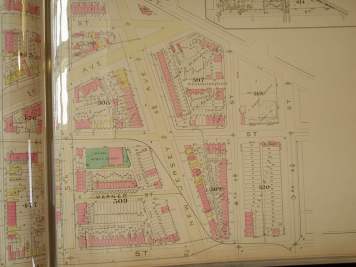The route to the metro in Shaw is littered with the signs of discontent. Literally littered. Last I looked there is part of the poster to impeach/recall (I forget) laying on the corner of R and 6th. They are all up and down the non-white non-Logan Circle part of Shaw. They are black, white and red signs calling for the removal of the world’s least charismatic politician, really, dead people are more exciting than Tony.
Walking with my neighbor, he wondered if the people responsible for the signs want to go back to the way things were with high crime and the control board. Playing a weak devil’s advocate I mentioned how, at least in Ward 8, the same Ward former Mayor for Life Barry has a chance to get on the council, people are not happy with Williams. Under Williams the city has become more unaffordable. I have heard the other side’s argument and I feel for them, I don’t agree and think the fight may be quixtoxic, but I feel for them.
For those of you who don’t know the story, Tony Williams came to DC during the 2nd reign of Marion “the bitch set me up” Barry (aka Mayor for Life) to get the city’s finances in order. It got so bad that there was a Control Board dictating to the city how it could spend it’s money and what it could do, as money and programs were both interrelated. Well Tony saved the day. Marion, suprisingly decided to not run for another umteenth term and Tony was urged to run, which he did and won. Unlike the previous Mayor, Tony was not warm and friendly, he was an accountant. Tony does not pretend to feel your pain, nor look remotely interested in you. No Tony is a facts and figures man, the kind of man business people and developers like; the kind of man that turns the older Black residents off. Oh one small thing, Tony is Black. Yes, someone may have revoked his “black-enough” card, but according to the adoption papers his mom got, he is in fact Black, no matter what the folks in Ward 8 say.
Under the rule of Mayor Tony Williams the Control Board went away, the overlords in Congress gave the city a tad bit more respect, and the city began attracting capital. Unfortunately, fortunately, depending on who you are, the capital included the gentrifacting development kind. Parts of the city people wouldn’t bother with were getting facelifts and rent increases, yadda, yadda, yadda- gentrified Shaw. So I’m gathering parts of the city undergoing gentrification where there is still a sizable African American population will see tons of these signs, as the message is more welcomed there.
The half ripped sign laying on the corner of 6th and R Sts. is also a sign of where the borders of where message might not be welcomed.

 and at MLK. Sadly the Historical Society’s library is not the best when it comes to reproducing what you found.
and at MLK. Sadly the Historical Society’s library is not the best when it comes to reproducing what you found.